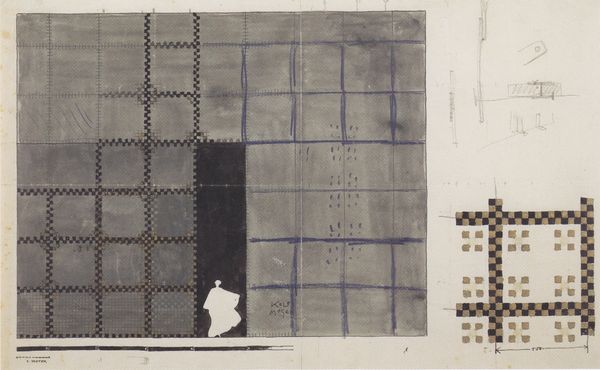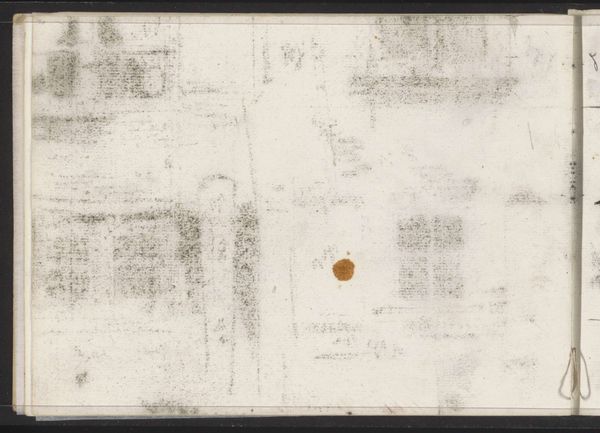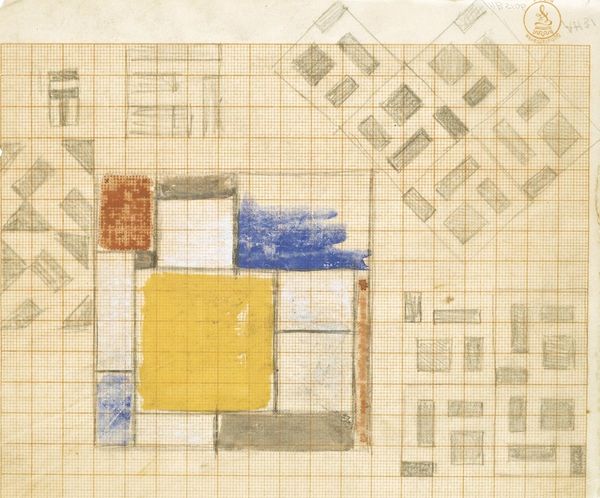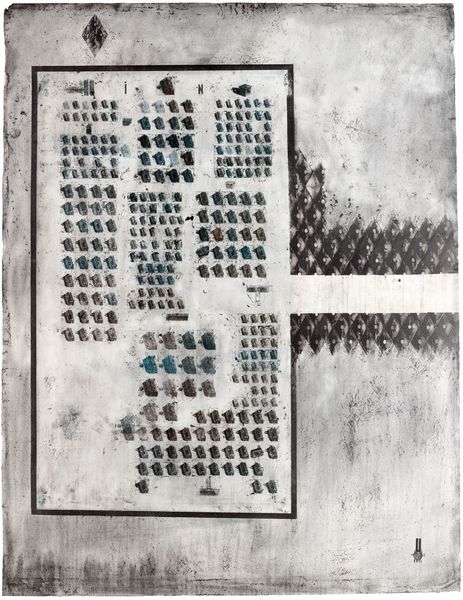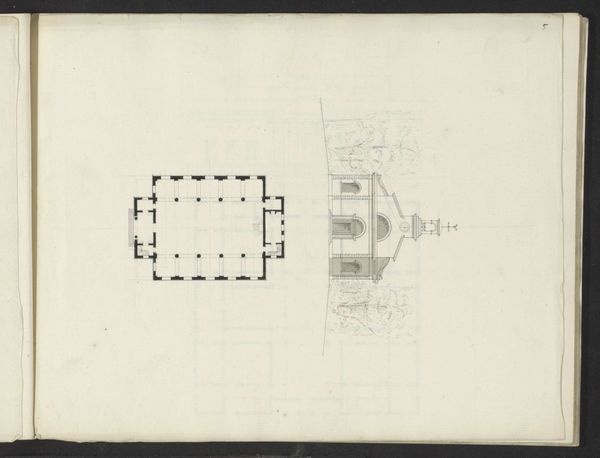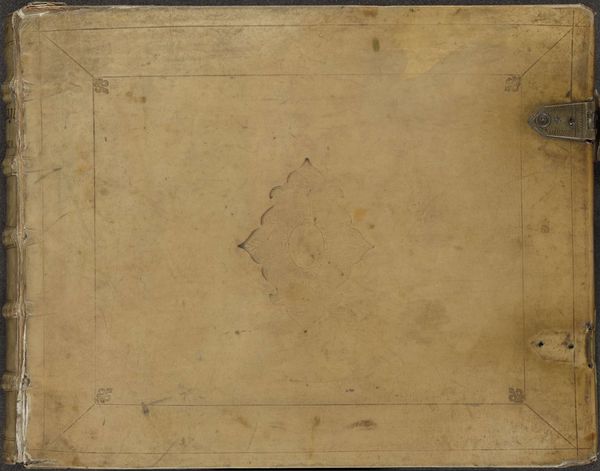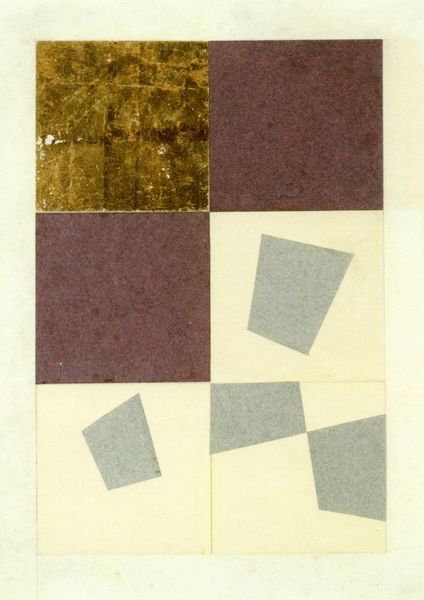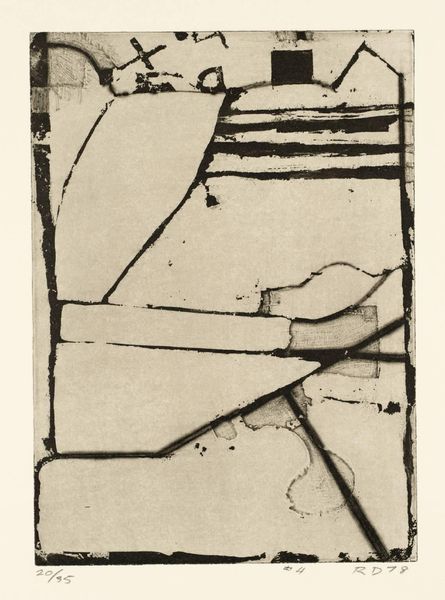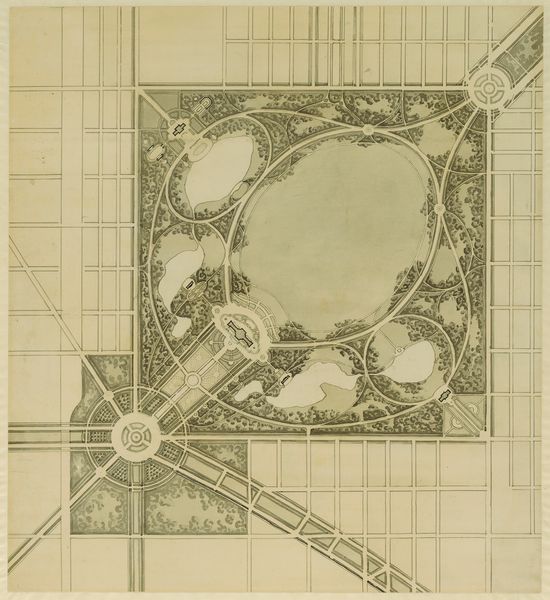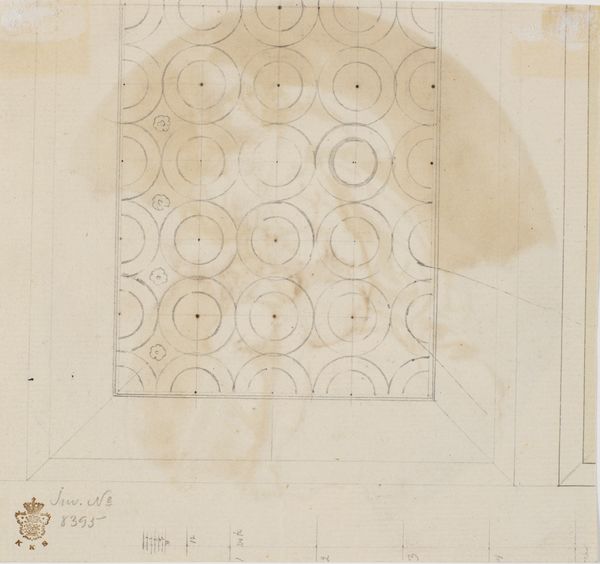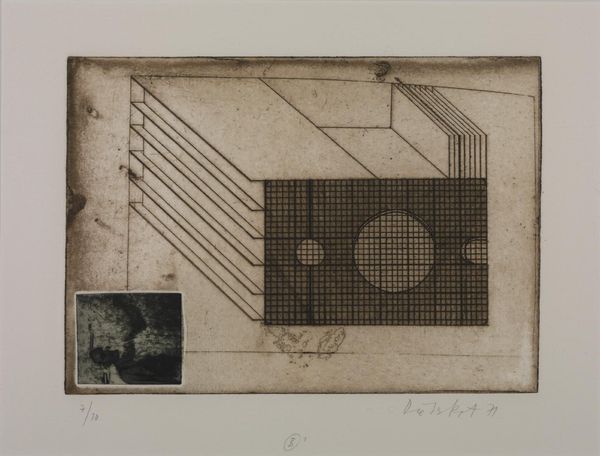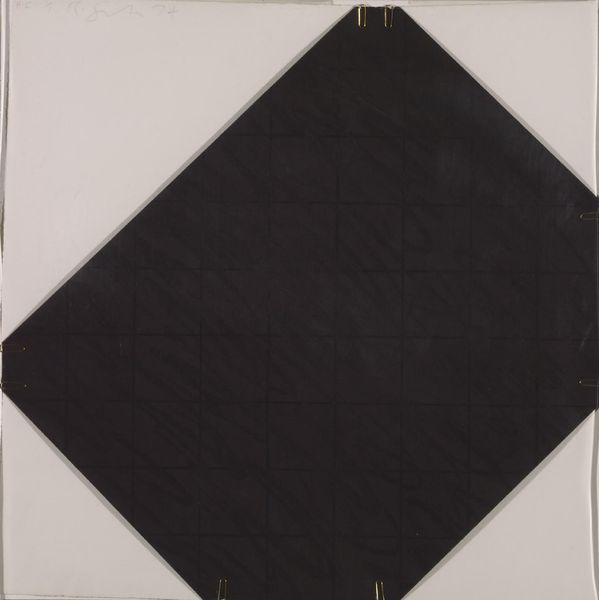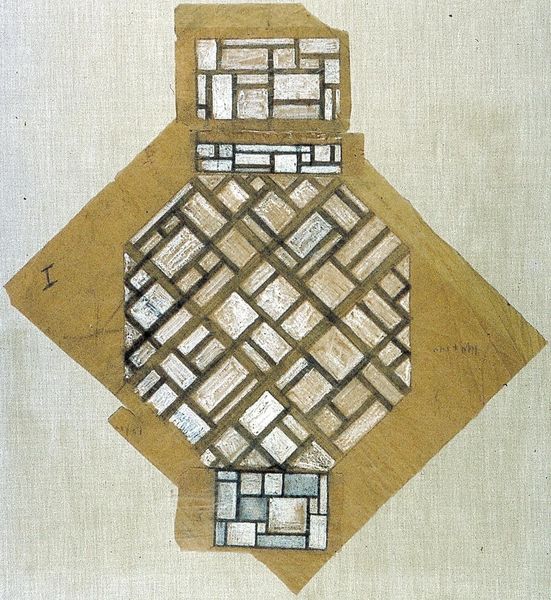
painting, paper
#
de-stijl
#
water colours
#
painting
#
pattern
#
paper
#
form
#
geometric
#
geometric-abstraction
#
abstraction
#
line
Copyright: Public domain
Editor: Theo van Doesburg's "Arithmetic Composition" from 1929, created with watercolour on paper. The increasing size of the black squares set against the pale grid gives it a dynamic yet very controlled feel. What's your take? Curator: I observe a careful interplay of line, form, and tone. The grid establishes a rigorous underlying structure, against which the squares present a calculated visual progression. Notice how the squares, rather than aligning perfectly with the grid, are slightly rotated, introducing tension. Editor: I see that now, that slight tilt is unsettling. So, is it about more than just simple shapes? Curator: Precisely. The painting eschews explicit narrative content, directing our attention to the essential elements of visual language. What do you make of the relationship between the smooth, unmodulated color within the squares and the textured ground upon which they rest? Editor: There's a real contrast there, almost a figure-ground relationship. The dark squares feel very flat, emphasizing their shape. Curator: Precisely. The formal tensions present in the geometric relationships achieve pictorial depth. The materiality of the ground drawing emphasizes process. Each element contributes to the overall experience, inviting sustained visual interrogation. Editor: So by using those very basic shapes it almost forces you to analyze everything you see? Curator: It proposes a method for seeing itself. Do we come to a clearer vision of this method through observation? Editor: Absolutely, I understand the intention behind its simplicity and formalism much more clearly now. It’s about how the components interact. Curator: Indeed. Van Doesburg creates an experience through pure visual means, encouraging us to decode the artwork by studying its intrinsic qualities.
Comments
No comments
Be the first to comment and join the conversation on the ultimate creative platform.
